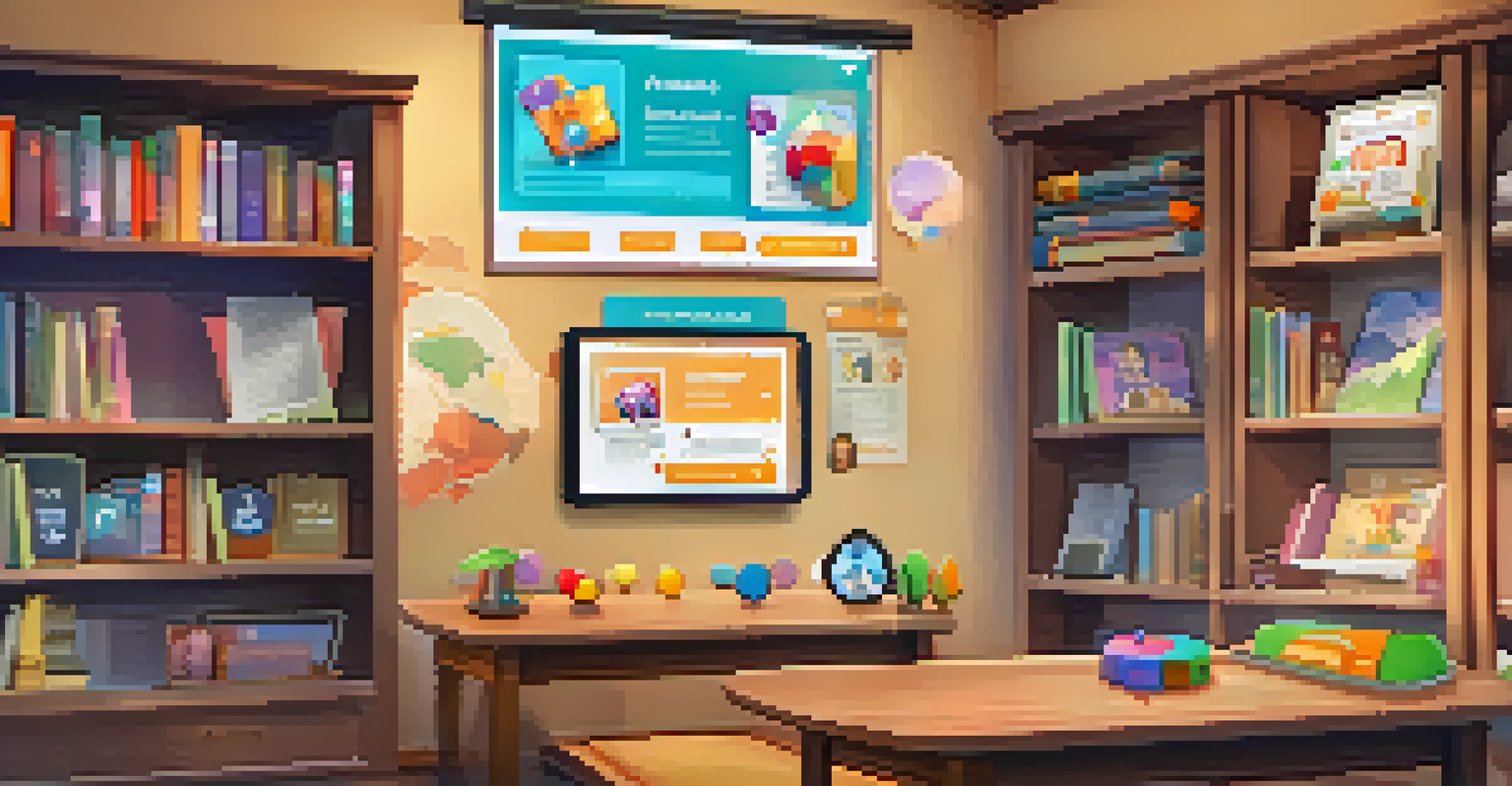Mobile Learning and Its Impact on Student Motivation

Understanding Mobile Learning and Its Benefits
Mobile learning refers to educational experiences delivered via mobile devices, enabling students to learn anytime, anywhere. This flexibility is a game-changer for today's learners, who often juggle multiple responsibilities. With access to resources on their smartphones or tablets, students can fit study time into their busy schedules, making education more accessible and personalized.
The beautiful thing about learning is that no one can take it away from you.
One of the primary benefits of mobile learning is its ability to cater to various learning styles. Whether a student is a visual learner who thrives on videos or an auditory learner who benefits from podcasts, mobile platforms provide diverse resources. This adaptability not only accommodates individual preferences but also fosters a more inclusive learning environment.
Moreover, mobile learning can significantly enhance student engagement. Interactive quizzes, gamified content, and social learning apps encourage participation, making education feel more like a game than a chore. When students are actively engaged, their motivation naturally increases, leading to better learning outcomes.
The Role of Accessibility in Student Motivation
Accessibility is a major factor in why mobile learning can boost student motivation. With mobile devices, students can access learning materials even in remote areas or during travel. This eliminates barriers to education, ensuring that every student has the opportunity to succeed, regardless of their circumstances.

Additionally, mobile learning supports differentiated instruction, allowing educators to tailor content to meet the diverse needs of their students. This personalized approach not only helps students grasp concepts better but also empowers them, fostering a sense of ownership over their learning. When students feel in control, their motivation tends to soar.
Mobile Learning Enhances Flexibility
Mobile learning allows students to access educational resources anytime, anywhere, making education more personalized and manageable.
Furthermore, the ability to learn on-the-go aligns with the fast-paced lifestyle of modern students. They can review notes during commutes or participate in discussions while waiting in line. This constant access to learning resources keeps students engaged and motivated, as learning becomes seamlessly integrated into their daily lives.
Gamification: Fueling Engagement in Mobile Learning
Gamification is the incorporation of game-like elements into learning experiences, and it's a powerful tool in mobile education. By introducing elements such as points, badges, and leaderboards, educators can create a sense of competition and achievement. This playful approach not only makes learning enjoyable but also motivates students to engage more deeply with the content.
Education is not the filling of a pail, but the lighting of a fire.
For instance, apps that reward students for completing tasks or reaching milestones can spark a desire to learn. When students see tangible rewards for their efforts, they're more likely to stay committed and motivated. This sense of accomplishment can significantly enhance their educational experience.
Moreover, gamified learning environments promote collaboration among students, fostering a sense of community. When learners work together to achieve common goals, they motivate each other, creating a supportive learning atmosphere. This social aspect of mobile learning further boosts motivation, as students feel connected and encouraged by their peers.
The Impact of Instant Feedback on Learning Motivation
One of the standout features of mobile learning is the capability for instant feedback. Unlike traditional learning methods where students might have to wait days for results, mobile platforms can provide immediate responses to quizzes and assignments. This quick turnaround helps students understand their performance in real-time, allowing them to adjust their strategies accordingly.
Instant feedback fosters a growth mindset, where students learn to view challenges as opportunities for improvement. When learners receive constructive feedback right away, they can pinpoint their weaknesses and celebrate their strengths. This cycle of continuous improvement keeps motivation levels high, as students see their progress firsthand.
Gamification Boosts Student Engagement
Incorporating game-like elements into mobile learning motivates students through competition and a sense of achievement.
Moreover, the immediacy of feedback can lead to increased accountability. Students are more likely to take responsibility for their learning when they see the direct consequences of their actions. This heightened sense of ownership can significantly boost their drive to succeed in their educational pursuits.
Enhancing Collaboration Through Mobile Learning Tools
Mobile learning facilitates collaboration among students, which can greatly enhance motivation. With tools like discussion forums, group chats, and collaborative document editing, students can work together seamlessly, regardless of their physical location. This connectivity not only enriches the learning experience but also fosters a sense of belonging.
When students collaborate, they share ideas and perspectives, which can lead to deeper understanding and retention of information. Group projects conducted through mobile platforms encourage teamwork and communication skills, making learning a shared journey. This collaborative spirit can ignite enthusiasm, as students motivate each other to achieve common goals.
Additionally, social learning environments allow students to seek help from peers and educators alike. When they feel supported by their community, students are more likely to stay engaged and motivated. This sense of connection is crucial for maintaining interest in the subject matter and achieving academic success.
Personalized Learning Pathways: A Key to Motivation
One of the most compelling aspects of mobile learning is the ability to create personalized learning pathways. Through adaptive learning technologies, mobile platforms can analyze a student's performance and tailor content to meet their unique needs. This customized approach helps students progress at their own pace, which can significantly boost their motivation.
When students are presented with material that aligns with their interests and skill levels, they are more likely to engage with the content. For example, a student struggling with math might receive additional practice problems tailored to their specific gaps, while another student could be challenged with advanced topics. This targeted approach keeps students motivated, as they see real progress in their learning.
Instant Feedback Improves Motivation
The capability for instant feedback in mobile learning helps students quickly understand their performance and fosters a growth mindset.
Furthermore, personalized learning pathways empower students to take charge of their education. They can set goals and track their progress, fostering a sense of ownership and accountability. This autonomy not only increases motivation but also instills a lifelong love for learning, as students learn to navigate their educational journeys.
Challenges and Considerations in Mobile Learning
While mobile learning offers numerous benefits, there are also challenges that educators and students face. One significant concern is the potential for distractions. With social media and games just a tap away, students may find it hard to stay focused on their studies. Educators need to implement strategies to minimize these distractions and keep learners on track.
Another challenge is ensuring equitable access to technology. Not all students may have access to mobile devices or reliable internet, which can create disparities in learning opportunities. Addressing these gaps is essential to ensure that the benefits of mobile learning can be enjoyed by all students, regardless of their socioeconomic background.

Finally, it's crucial for educators to receive proper training in mobile teaching strategies. Without a solid understanding of how to effectively use mobile tools, the learning experience may fall short. Continuous professional development can help educators harness the full potential of mobile learning, ensuring that students remain motivated and engaged.